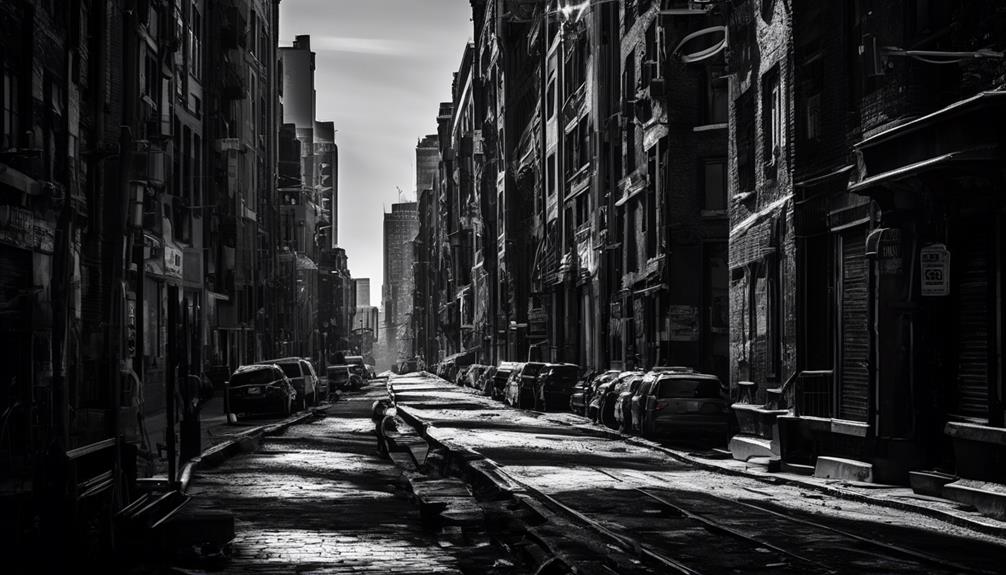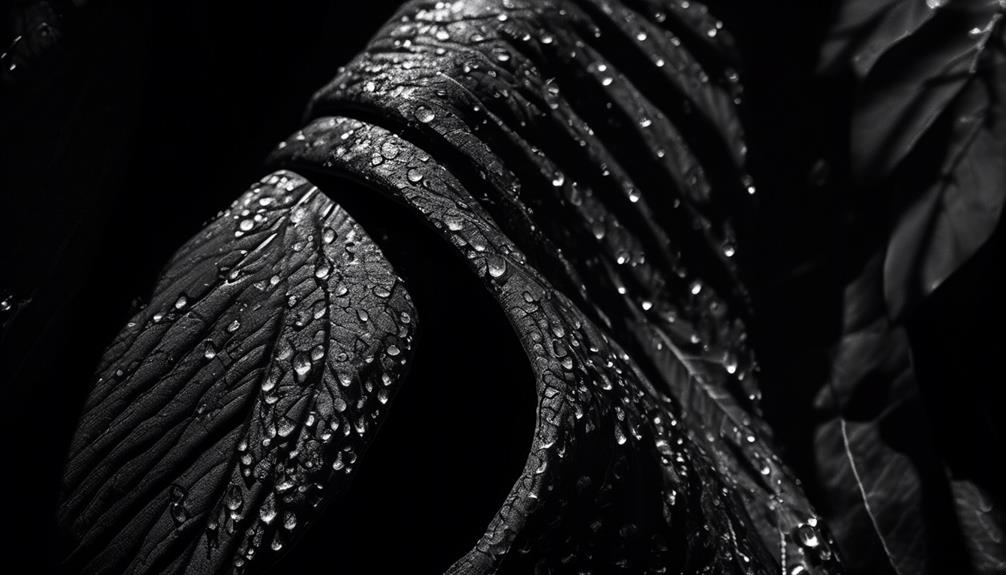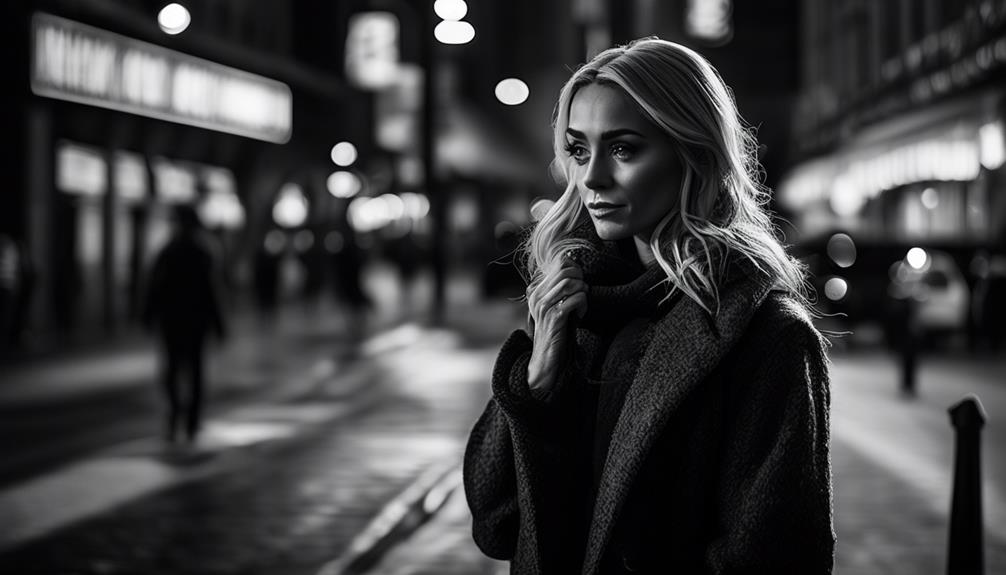Please note this post may contain affiliate links picked by me (Jay) that I have deemed may be of interest or relevant to you the reader of this.
These links do not affect the cost of the thing if you decide to purchase but i may get a little money if you choose to purchase.
For more information on my affiliate link policy click here.
As a photographer, I have always been captivated by the timeless beauty of monochrome photography. The way it strips away the distractions of color and focuses solely on light, contrast, and composition is truly mesmerizing.
In this discussion, we will explore the history of monochrome photography, delve into the importance of understanding light and contrast, uncover composition techniques specifically tailored for black and white images, master the art of tonal range, and discover post-processing tips to enhance the impact of our monochrome photographs.
So, if you're ready to unlock the basics of this incredible art form and elevate your photography skills, come along on this journey with me.
Key Takeaways
- Monochrome photography has a timeless beauty and significant impact on modern art.
- Mastering light and contrast is crucial for creating stunning monochrome images.
- Composition techniques, such as framing and capturing textures, enhance the visual impact of black and white images.
- Different film types and techniques for manipulating shadows and contrast affect the tonal range in monochrome photography.
History of Monochrome Photography
In exploring the captivating history of monochrome photography, one can't help but be enthralled by the timeless beauty and artistic mastery that has been achieved through the absence of color. The impact of monochrome photography on modern art can't be overstated. Throughout history, influential monochrome photographers have pushed the boundaries of this art form, creating stunning works that continue to inspire and captivate audiences today.
One such influential photographer is Ansel Adams, known for his breathtaking black and white landscapes. Adams' use of light and shadow, combined with his meticulous attention to detail, created images that evoke a sense of awe and wonder. His photographs not only captured the beauty of nature but also conveyed a deep emotional connection to the landscapes he portrayed. Adams' work not only influenced other photographers but also left an indelible mark on the world of art.
Another renowned monochrome photographer is Dorothea Lange. Through her powerful documentary photography, Lange captured the human condition during the Great Depression. Her iconic photograph, 'Migrant Mother,' became a symbol of the struggles faced by many Americans during that time. Lange's ability to tell compelling stories through her monochrome images revolutionized the field of documentary photography and paved the way for future generations of photographers.
The impact of monochrome photography on modern art is undeniable. By stripping away color, artists are forced to focus on composition, contrast, and texture. This allows for a deeper exploration of form and emotion, resulting in images that are both visually striking and emotionally evocative. Monochrome photography challenges the viewer to see beyond the surface and delve into the essence of the subject matter, ultimately creating a more profound and thought-provoking experience.
Understanding Light and Contrast
Exploring the interplay of light and contrast is essential to understanding the art of monochrome photography. In this section, we will delve into the importance of mastering the use of light and contrast to create captivating monochrome images. By understanding how light interacts with your subject and how contrast can be manipulated, you can take your monochrome photography to new heights.
To begin, let's discuss metering techniques. Metering is the process of measuring the light in a scene to determine the correct exposure settings. In monochrome photography, metering becomes even more crucial as you rely solely on shades of gray to convey your message. Understanding different metering modes, such as spot metering or center-weighted metering, can help you accurately capture the desired tonal range.
Creating dramatic effects in monochrome photography often involves playing with contrast. Contrast refers to the difference between the lightest and darkest areas of an image. By increasing the contrast, you can add depth and visual interest to your monochrome photographs. One way to achieve this is through post-processing techniques, such as adjusting the levels or curves in editing software.
In summary, mastering light and contrast is key to creating stunning monochrome photographs. By utilizing metering techniques and experimenting with contrast, you can unlock the full potential of monochrome photography and capture breathtaking images that evoke emotion and captivate your audience.
| Metering Techniques | Creating Dramatic Effects |
|---|---|
| Spot Metering | Adjusting Contrast Levels |
| Center-Weighted Metering | Manipulating Tonal Range |
| Evaluative Metering | Post-Processing Techniques |
Composition Techniques for Black and White Images
When composing black and white images, it's essential to consider various techniques that can enhance the visual impact and storytelling potential of your photographs. One important aspect to focus on is framing techniques. By carefully selecting what to include within the frame and how to position it, you can create a sense of balance, depth, and visual interest in your black and white images.
Experiment with different compositions, such as the rule of thirds or leading lines, to guide the viewer's eye and create a dynamic composition.
Another technique to pay attention to when capturing black and white images is the art of capturing textures. Black and white photography has the ability to emphasize the textures and details in a scene, adding depth and dimension to your photographs. Look for subjects with interesting textures, such as weathered surfaces, rough textures, or intricate patterns, and experiment with different lighting conditions to enhance these textures even further.
By capturing and highlighting these textures, you can create visually engaging and captivating black and white images.
Incorporating framing techniques and capturing textures are just some of the ways you can enhance the composition of your black and white images. Remember to experiment, think outside the box, and push the boundaries of traditional composition to create unique and innovative photographs that tell a compelling story.
Mastering the Art of Tonal Range
As I continued to explore the captivating world of black and white photography, I quickly realized that mastering the art of tonal range is essential to creating visually stunning and impactful images.
The tonal range refers to the distribution of light and dark tones in a photograph, and understanding how to control and manipulate these tones can greatly enhance the overall mood and atmosphere of an image.
Here are four techniques that I've found to be particularly effective in achieving a wide tonal range and creating striking black and white photographs:
- Exploring different monochrome film types: Different films have unique characteristics that can affect the tonal range of your photographs. Experimenting with different types of monochrome films allows you to discover the ones that best suit your artistic vision and desired tonal range.
- Techniques for creating dramatic shadows: Shadows play a crucial role in black and white photography, as they add depth, dimension, and contrast to an image. By using techniques such as side lighting, backlighting, and low-key lighting, you can create dramatic shadows that enhance the tonal range and create a sense of mystery and intrigue in your photographs.
- Utilizing contrast: Contrast is key to achieving a wide tonal range. By carefully controlling the balance between light and dark areas in your composition, you can create a visually striking image with a full range of tones, from rich blacks to bright whites.
- Post-processing techniques: Post-processing software provides a range of tools and adjustments that allow you to further enhance the tonal range in your black and white photographs. Techniques such as dodging and burning, adjusting levels and curves, and applying selective adjustments can help you fine-tune the tonal range and create a more impactful image.
Mastering the art of tonal range in black and white photography is an ongoing process that requires experimentation, practice, and a keen eye for detail. By exploring different monochrome film types, utilizing techniques for creating dramatic shadows, and leveraging post-processing tools, you can take your black and white photographs to new heights, creating visually stunning and emotionally impactful images that captivate and inspire your audience.
Post-Processing Tips for Monochrome Photography
To truly bring out the beauty and depth in your black and white photographs, mastering the art of post-processing is an essential step in the creative process. Post-processing allows you to enhance the depth in monochrome images and explore different monochrome styles and aesthetics.
One of the most effective ways to enhance depth in monochrome images is through the use of contrast. By adjusting the contrast, you can create a greater sense of dimension and bring out the subtle details in your photographs.
Another technique to consider is dodge and burn, which involves selectively lightening and darkening specific areas of the image to create a more dynamic composition.
Additionally, experimenting with different monochrome styles and aesthetics can add a unique touch to your photographs. Whether you opt for a high contrast, gritty look or a soft and dreamy feel, the possibilities are endless.
Don't be afraid to push the boundaries and explore new techniques to truly unlock the potential of your monochrome images.
Frequently Asked Questions
What Are the Best Camera Settings for Capturing Monochrome Images?
When capturing monochrome images, the best camera settings depend on the lighting conditions and the desired outcome.
Start by adjusting the ISO to achieve the right amount of grain or noise.
Set a wide aperture for shallow depth of field or a smaller one for sharpness throughout the image.
Experiment with different shutter speeds to capture motion or freeze it.
How Can I Achieve a Vintage or Film-Like Look in My Monochrome Photographs?
To achieve a vintage or film-like look in monochrome photographs, there are a few techniques that can be used. Adding grain and texture can give your images a nostalgic feel.
Experiment with different post-processing methods, such as adjusting contrast and tone, to create the desired effect.
Don't be afraid to get creative and try new things. By exploring different techniques, you can unlock the potential of monochrome photography and create captivating images with a vintage twist.
Are There Specific Subjects or Scenes That Work Better in Black and White?
In my experience, certain subjects or scenes tend to work better in black and white photography. The impact of texture and contrast is heightened without the distraction of color. It allows you to focus on the details and the interplay between light and shadow, creating a dramatic and captivating composition.
Black and white photography offers a unique opportunity to explore the beauty and depth of monochrome, pushing the boundaries of creativity and innovation.
What Are Some Common Mistakes to Avoid When Shooting Monochrome?
When shooting monochrome, there are some common mistakes to avoid.
One of the most important aspects is understanding lighting techniques. It's crucial to pay attention to the contrast and tones in your composition, as they can make or break the image.
Another common mistake is relying too heavily on post-processing to create the desired effect. Instead, focus on capturing the right tones and textures in-camera.
With proper attention to lighting and composition, you can create stunning monochrome images that truly stand out.
Can You Recommend Any Famous Photographers Known for Their Monochrome Work?
Sure, when it comes to famous monochrome photographers, a few names that immediately come to mind are Ansel Adams, Henri Cartier-Bresson, and Dorothea Lange. These photographers are known for their incredible ability to capture stunning monochrome images that evoke strong emotions.
To create dramatic monochrome images, techniques such as contrast, texture, and lighting play a crucial role. Experimenting with different angles, perspectives, and compositions can also help in achieving that desired dramatic effect in your monochrome photography.
Conclusion
In the world of monochrome photography, a rich history is combined with the beauty of light and contrast. By understanding composition techniques and mastering tonal range, photographers can capture stunning black and white images.
And with the right post-processing tips, these images can truly come to life. So, whether you're a seasoned photographer or just starting out, delve into the world of monochrome photography and unlock a whole new level of artistic expression.
Let the power of black and white ignite your imagination and create unforgettable imagery.


